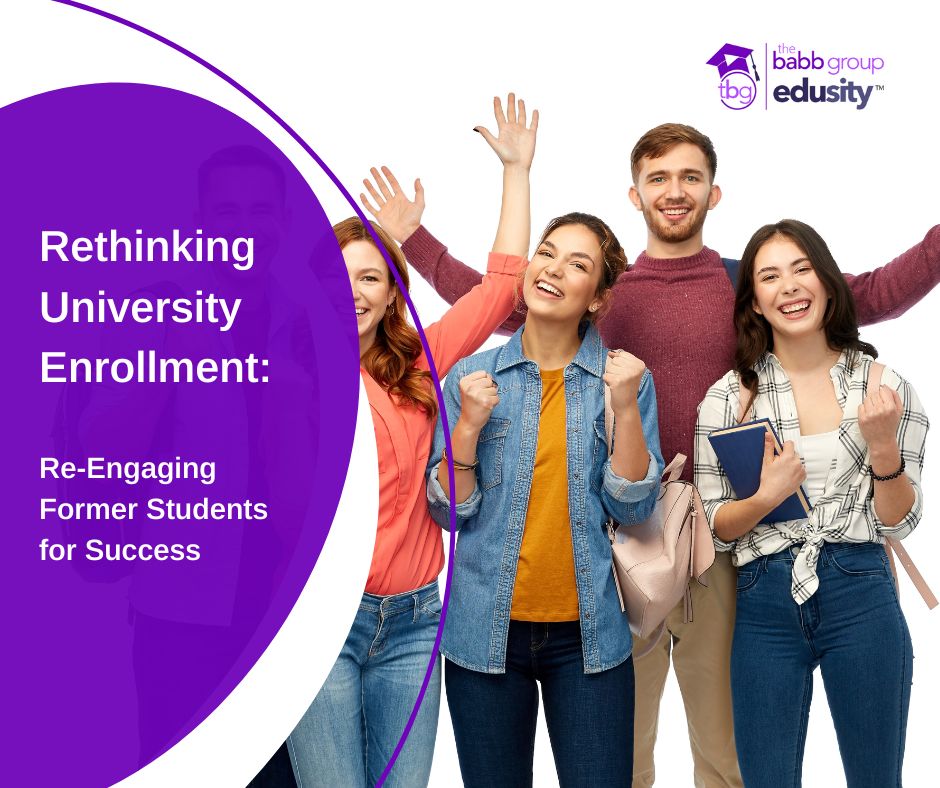Rethink enrollment by re-engaging former students. Follow the successful steps of CSDHU:
- Break down barriers to enrollment, attendance, and participation
- Institute flexible learning models
- Embrace a long-term vision for relationships with students
Universities increasingly realize the need to extend their focus beyond the traditional 18 to 24-year-old, on-campus student demographic. J. Kim McNutt, Dean of the College of Continuing and Professional Education at California State University, Dominguez Hills (CSUDH), shares insights into their innovative program to re-engage former students.
Understanding the ‘Stop Out’ Phenomenon
First, McNutt encourages universities to rethink their target audience. On a recent podcast, he said, “Universities have to move beyond the 18 to 24-year-old student population and open up their minds to view the wider world.” McNutt emphasizes recognizing and addressing why students ‘stop out.’ Stop out is the term McNutt and his colleagues use to describe students who ended their education before graduating. The reasons are often diverse and complex. McNutt explains, “The stories were heartbreaking. Some students said I lost my job or I’m a caregiver. I have small children. I’m divorced. And I’m taking care of aging parents.” McNutt stresses the need for universities to approach these situations empathetically and find ways to support these students on their educational journey.
Listen to the full podcast with Kim McNutt here.
The “Once a Toro, Always a Toro” Re-engagement Program
CSUDH re-engaged over 800 students within two years as part of its “Once a Toro, Always a Toro” re-engagement program. Toro is the school’s mascot. McNutt details the success of the program. They reached out to over 8,000 students to gather information and build relationships. The team hosted a listening session in 2019, where a dozen students shared their stories. These narratives were a foundation for creating personalized solutions and support structures tailored to the non-traditional student experience.
Breaking Down Barriers
CSUDH implemented a concierge model to facilitate returning students, assigning dedicated staff to guide students through the re-enrollment process. This approach reduced barriers by eliminating applications, identifying scholarships, and navigating financial aid. McNutt emphasizes the importance of being proactive and meeting the learners where they are, both physically and in terms of their life circumstances.
Flexible Learning Models
The Long-Term Vision
McNutt encourages universities to view re-engagement as a long-term investment. The goal is not just to bring students back for one degree but to foster a continuous relationship throughout their careers. This approach aligns with the evolving nature of education, where individuals may seek additional degrees, microcredentials, or other programs throughout their professional journey. “I would encourage any university administrators listening to this to look at your re-engagement pool. Go through your records. Look at the folks who have stopped out. Bring them back. Find out why they did and then build services around them. Wrap around services to help them come back,” McNutt said.
From Transactions to Relationships
The innovative strategies CSUDH uses serve as a blueprint for universities worldwide to rethink enrollment and cater to the diverse needs of their student body. Universities can create a supportive environment that fosters continuous learning and personal growth by redefining the student experience as a lifelong journey and prioritizing relationship-building over transactions.
Angela Britcher
Latest posts by Angela Britcher (see all)
- Enhancing First-Year Experiences in Higher Education - August 1, 2024
- Enhancing Education with Virtual Reality: A Hands-On Approach - June 27, 2024
- Higher Education Trends: Insights from Our COO, Sheila Fry - June 13, 2024
